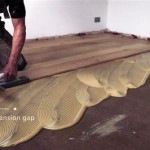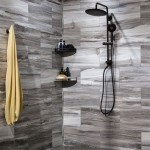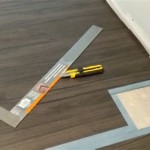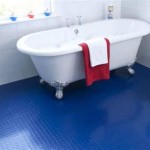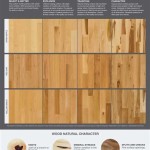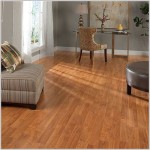Best Outside Dog Kennel Flooring Ideas
Choosing the right flooring for an outdoor dog kennel is a critical decision that impacts the health, safety, and comfort of the animal housed within. A well-considered flooring choice provides drainage, is easy to clean, prevents the accumulation of bacteria and parasites, and offers a comfortable surface for the dog to stand and lie on. The ideal flooring material also needs to be durable enough to withstand the elements and the wear and tear associated with dog activity. Several factors influence this choice, including the size of the kennel, the breed and size of the dog, the climate in which the kennel is located, and the budget available.
The longevity of the kennel itself is also tied to the effectiveness of the flooring. Improper flooring can lead to water accumulation, creating a breeding ground for mold and mildew, which can degrade the kennel structure over time. Furthermore, inadequate drainage can result in muddy conditions, making it difficult to maintain cleanliness and increasing the risk of foot problems for the dog. Therefore, careful consideration of the advantages and disadvantages of different flooring options is essential for creating a healthy and sustainable outdoor dog kennel environment.
Gravel and Crushed Stone
Gravel and crushed stone are popular choices for outdoor dog kennel flooring due to their relatively low cost and ease of installation. These materials provide decent drainage, helping to prevent the accumulation of standing water. The angular shape of crushed stone allows it to compact well, creating a stable surface. However, the suitability of gravel or crushed stone depends on the size and type of the material selected.
Smaller gravel sizes can be uncomfortable for dogs to walk on, particularly those with sensitive paws. Furthermore, small gravel can easily become embedded in a dog’s fur or paws, leading to discomfort and potential injury. Over time, gravel and crushed stone can also become mixed with dirt and waste, making it difficult to clean effectively. This can contribute to the build-up of bacteria and parasites, posing a health risk to the dog.
To mitigate these issues, consider using larger sizes of crushed stone that are less likely to get stuck in fur. Implementing a regular cleaning routine, including rinsing the stone with water and disinfecting occasionally, can help to maintain hygiene. The installation of a geotextile fabric beneath the gravel layer is highly recommended. This fabric acts as a barrier, preventing the gravel from sinking into the soil below and inhibiting weed growth. This contributes to the long-term stability and cleanliness of the gravel flooring.
Another consideration is the potential for digging. Some dogs enjoy digging, and gravel or crushed stone can be easily excavated. If the dog is prone to digging, reinforcing the perimeter of the kennel with buried wire mesh or other barriers may be necessary to prevent escapes.
Concrete
Concrete is a durable and long-lasting flooring option for outdoor dog kennels. It provides a smooth, solid surface that is easy to clean and disinfect. Concrete is resistant to digging and can withstand heavy traffic, making it suitable for multiple dogs or larger breeds. However, concrete also has several drawbacks that need to be considered.
One of the primary concerns with concrete is its lack of drainage. Without proper sloping and drainage systems, water can pool on the surface, creating slippery conditions and potentially leading to health problems. To address this, the concrete slab should be poured with a slight slope to facilitate water runoff. The inclusion of drains strategically placed within the kennel area is also essential for effective water removal.
Concrete can also be cold and hard, especially during colder months. This can be uncomfortable for dogs to lie on for extended periods. To improve comfort, consider providing bedding or raised platforms within the kennel. Rubber mats or kennel decking can also be used to provide a warmer and more comfortable surface.
The initial cost of installing a concrete slab can be significant, but its durability and ease of maintenance can make it a cost-effective option in the long run. Proper sealing of the concrete can help to prevent staining and water damage, extending its lifespan. Regularly cleaning the concrete with a pressure washer and disinfectant will help to maintain hygiene and prevent the build-up of bacteria.
Consider the potential for heat retention in warmer climates. Concrete can absorb and retain heat, making it uncomfortably hot for dogs during the summer months. Providing shade and ensuring adequate ventilation within the kennel can help to mitigate this issue. Light-colored concrete can also help to reduce heat absorption.
Wood Decking and Pallets
Wood decking and pallets offer a more natural and aesthetically pleasing flooring option compared to gravel or concrete. Wood provides a softer surface for dogs to walk and lie on, and it can be warmer than concrete during colder months. However, wood is also more susceptible to damage from moisture, insects, and decay. The use of pallets should be approached with caution, as they can pose safety risks if not properly treated and maintained.
When using wood decking, it's essential to choose treated lumber to prevent rot and insect infestation. The decking should be installed with proper spacing to allow for drainage and ventilation. A sealant or stain should be applied regularly to protect the wood from the elements and extend its lifespan.
Pallets, while often readily available and inexpensive, can be problematic. Many pallets are treated with chemicals that can be harmful to dogs. Furthermore, pallets can splinter and crack, creating sharp edges that can injure the animal. If using pallets, ensure they are heat-treated rather than chemically treated and inspect them regularly for damage. Sanding and sealing the pallets can help to reduce the risk of splinters and protect the wood.
Regardless of whether wood decking or pallets are used, a raised platform is recommended to improve drainage and ventilation. This helps to prevent moisture accumulation and reduces the risk of rot and mold growth. Regular cleaning and maintenance are essential to keep the wood flooring clean and hygienic.
Consider the dog's chewing habits. Some dogs are prone to chewing on wood, which can damage the flooring and pose a choking hazard. If the dog is a chewer, alternative flooring options may be more suitable.
Rubber Mats and Interlocking Tiles
Rubber mats and interlocking tiles offer a comfortable, non-slip surface for outdoor dog kennels. These materials are typically made from recycled rubber and are durable, easy to clean, and resistant to water and chemicals. Rubber flooring can provide cushioning, reducing stress on the dog's joints and improving overall comfort.
The installation of rubber mats and interlocking tiles is relatively simple, and they can be easily removed and replaced if necessary. They are also available in various thicknesses and textures, allowing for customization to suit the specific needs of the dog and the kennel environment. Proper drainage is still a concern, however. While the rubber itself is waterproof, water can accumulate underneath the mats if the underlying surface is not properly sloped or drained.
To address drainage issues, ensure that the base surface is sloped appropriately to facilitate water runoff. Perforated rubber mats can also be used to allow water to drain through the flooring. Regular cleaning with a mild detergent and water is essential to maintain hygiene and prevent the build-up of bacteria. Pressure washing can also be used to remove stubborn dirt and grime.
The cost of rubber mats and interlocking tiles can be higher than gravel or wood, but their durability and ease of maintenance can make them a worthwhile investment. Consider the dog's potential to chew on the rubber. Some dogs may be tempted to chew on the edges of the mats or tiles, so select a material that is resistant to chewing and does not pose a choking hazard if ingested.
Artificial Turf
Artificial turf provides a visually appealing and relatively soft surface for outdoor dog kennels. It offers a more natural look compared to concrete or rubber and can be more comfortable for dogs to walk and lie on. High-quality artificial turf is designed to be durable, weather-resistant, and easy to clean.
Proper installation is crucial for the long-term performance of artificial turf. The base surface should be properly prepared and compacted to ensure adequate drainage. A layer of crushed stone or gravel is typically used as a base, followed by a layer of geotextile fabric to prevent weed growth. The artificial turf is then laid over the top and secured in place.
While artificial turf is designed to be permeable, it's important to choose a product with adequate drainage capabilities. Look for turf with a high drainage rate to prevent water from pooling on the surface. Regular cleaning is essential to remove urine and feces, which can cause odors and attract insects. Rinsing the turf with water and using an enzymatic cleaner can help to neutralize odors and maintain hygiene.
The cost of artificial turf can be higher than other flooring options, but its aesthetic appeal and ease of maintenance can make it a worthwhile investment. Consider the dog's digging habits. Some dogs may attempt to dig up the artificial turf, so securing the edges properly is important. Using stakes or burying the edges can help to prevent digging. Selecting a high-quality turf designed for pet use can also improve its durability and resistance to damage.
Ultimately, the best outside dog kennel flooring idea depends on a combination of factors including budget, climate, dog breed and size, and personal preferences. Thorough research and planning, weighing the benefits and drawbacks of each potential material, are crucial in selecting the optimal flooring to create a comfortable, clean, and safe environment for the dog.

Dog Kennel Flooring Options For Indoor Outdoor Areas

Dog Kennel Flooring Options For Indoor Outdoor Areas

Outdoor Dog Kennel Flooring Options

The Best Rock Flooring To Use For Dog Kennels

How To Build Dog Kennel Floors Using Ecogrid

The Best Flooring Features For Outdoor Dog Kennels

Outdoor Dog Kennel Flooring Options Top

Best Flooring Options For Outdoor Dog Kennels Posh Living

Best Flooring Options For Outdoor Dog Kennels Posh Living

How To Build A Diy Chain Link Dog Kennel
Related Posts

